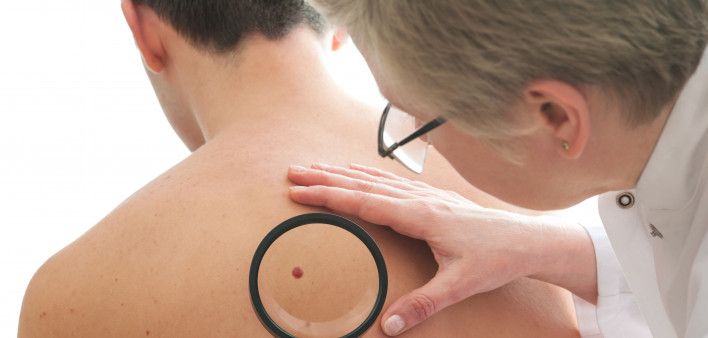Compared with heterosexual men, gay and bisexual men have a higher rate of skin cancer, a difference that researchers theorize may be driven by greater use of indoor tanning facilities among sexual minority men.
Sean Singer, a medical student at Harvard Medical School, and colleagues published a paper in JAMA Dermatology in which they analyzed data from Behavioral Risk Factor Surveillance System surveys covering 2014 to 2018. The surveys include data on nearly 850,000 U.S. adults, including some 350,000 heterosexual men, 7,500 gay men, 5,000 bisexual men, 470,000 heterosexual women, 5,400 lesbian women and 9,500 bisexual women.
The survey respondents self-reported their history of skin cancer.
Among the gay and bi men, a respective 8.1% and 8.4% reported ever having skin cancer, compared with 6.7% of the heterosexual men.
After adjusting the data to account for various differences between the groups, the study authors found that compared with heterosexual men, gay men had a 26% higher rate of skin cancer, and bisexual men had a 48% higher rate.
Among women, 6.6% of heterosexuals, 5.9% of lesbians and 4.7% of the bisexuals reported a skin cancer history.
Compared with heterosexual women, bisexual women had a 22% lower skin cancer rate, and lesbian women had a comparable rate.
In another paper based on the database and published in the same journal, researchers found that compared with cisgender (non-transgender) men, people who identified as gender-nonconforming had a 2.11-fold greater skin cancer rate, but trans men and women had a comparable rate.
This study, which included data on 368,000 cisgender men, 1,200 trans me, 492,000 cisgender women, 1,700 trans women and 766 gender-nonconforming people, was limited by the fact that it did not include cisgender women as a comparison group.
The rates of skin cancer across the lifetime were 6.6% among cisgender men, 6.0% among trans men, 6.4% among cisgender women, 5.8% among trans women and 7.1% among gender-nonconforming individuals.
In an accompanying editorial, Howa Yeung, MD, of Emory University School of Medicine in Atlanta, called for future research on the association between sexual orientation and gender identity and skin cancer to parse their data according to skin cancer subtypes and the locations of skin cancers. This could help identify factors driving higher rates of skin cancer among certain groups, including human papillomavirus (HPV) and UV radiation exposure.
Gay and bi men have a high rate of HPV, which can cause anal and oral cancer as well as squamous cell carcinomas, which can manifest as skin cancer.
To read the gay and bi men study abstract, click here.
To read the gender identity study abstract, click here.
To read the editorial abstract, click here.







Comments
Comments